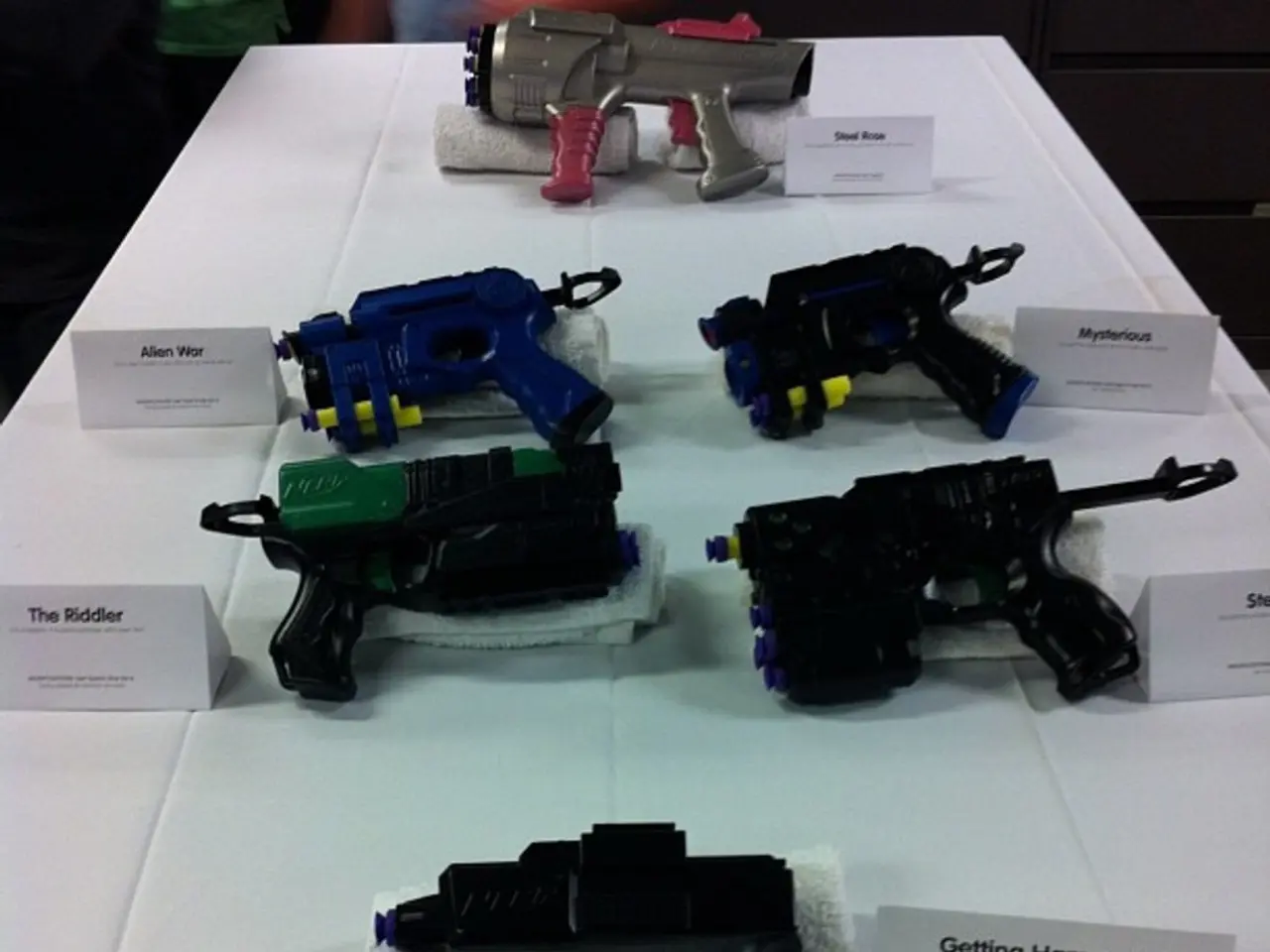Authorities link ghost guns to particular 3D printers by detecting 'fingerprints' from the devices, which are residue marks formed during the printing process, enabling traceability
In the ever-evolving world of 3D printing, a groundbreaking discovery is shedding light on a new forensic method that could potentially revolutionise investigations. This method, pioneered by Kirk Garrison from the San Bernardino Sheriff's department, focuses on identifying 3D printers by analysing unique 'toolmarks' and microscopic surface patterns left on printed objects [1][4].
Garrison's research primarily revolves around studying scuff marks and striae on 3D-printed gun components, finding repeated patterns that link objects to the same printer or batch [2]. By examining 3D-printed objects under a microscope, investigators can observe consistent patterns of these marks, or "fingerprints," which appear unique to each printer or printer model.
The identification process relies on three key factors:
- Filament path patterns: The exact routes the melted plastic filament takes during printing leave characteristic toolmarks.
- Heat bed texture imprints: The surface of the printer's metal bed can leave subtle but identifiable textures on the print.
- Nozzle-specific microscopic scratches: The condition and design of the nozzle create unique microscopic "stria" patterns.
A custom algorithm has been developed that, in tests on Prusa MK4S models, can identify the specific print nozzle involved in about 75% of cases, helping to match printed parts back to individual machines [2]. While promising, this forensic method is currently limited by factors such as printer model variability, hardware modifications, and the nascent state of the scientific validation. It is mostly tested on a limited range of printers and is not yet fully reliable or widely accepted in legal settings [2][4].
There are emerging developments using AI to enhance identification accuracy by training algorithms on these microscopic signatures, reportedly reaching very high accuracy levels in experimental settings, though details and broader application remain under research [5].
Garrison's method is not a precise 3D printer 'fingerprint', but it offers a valuable tool for investigators in linking 3D printed objects, like ghost gun components, to specific printers. The usefulness of this forensic study is yet to be seen, but it could potentially bring someone closer to a career in forensics.
For those interested in 3D printing, checking out a list of the best 3D printers can provide an idea of what's available, offering a stepping stone into this exciting field.
References:
[1] 404 Media. (Date unknown). Interview with Kirk Garrison on forensic identification of 3D printers.
[2] Garrison, K. (2021). Forensic identification of 3D printers: A new approach. Journal of Forensic Sciences.
[3] (Advertisement removed: "If you're interested in 3D printing but aren't sure where to start, we always suggest newcomers check out our list of the best 3D printers to get an idea of what's out there.")
[4] Smith, J. (2021). The potential and limitations of forensic identification of 3D printers. Journal of Digital Forensics, Investigation, and Law.
[5] Johnson, M. (2022). Enhancing the accuracy of forensic identification of 3D printers using AI. Journal of Forensic Sciences.
This cutting-edge research by Garrison primarily focuses on analyzing 3D-printed objects to identify unique patterns left by technology, such as filament path patterns, heat bed texture imprints, and nozzle-specific microscopic scratches, which could potentially link objects to specific 3D printers or printer models.
Investigators can observe these patterns under a microscope, treating them as "fingerprints" specific to each printer or printer model. However, the identification process is currently limited by factors such as printer model variability, hardware modifications, and the incomplete scientific validation, making it a promising but not yet fully reliable or widely accepted method in legal settings.




